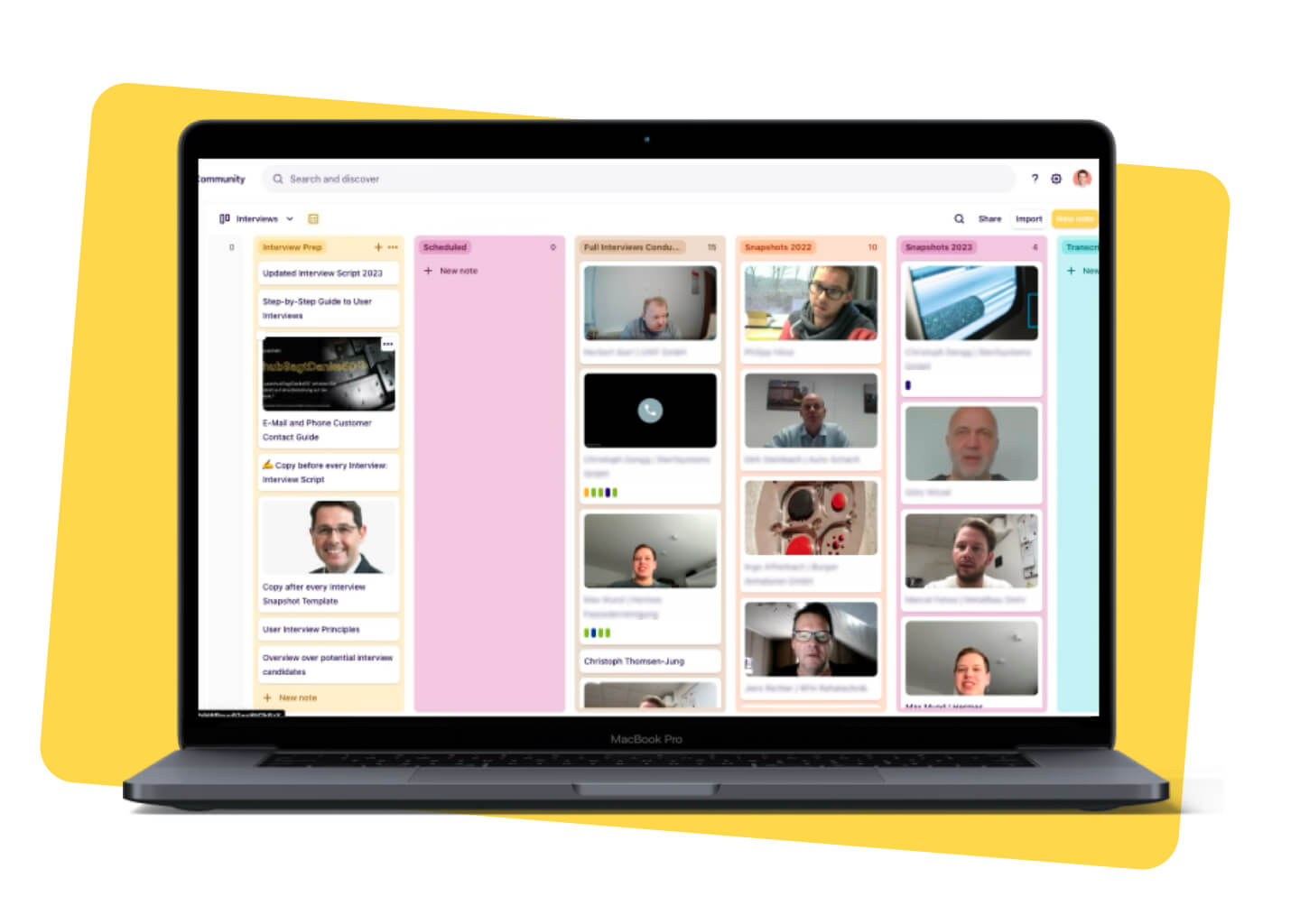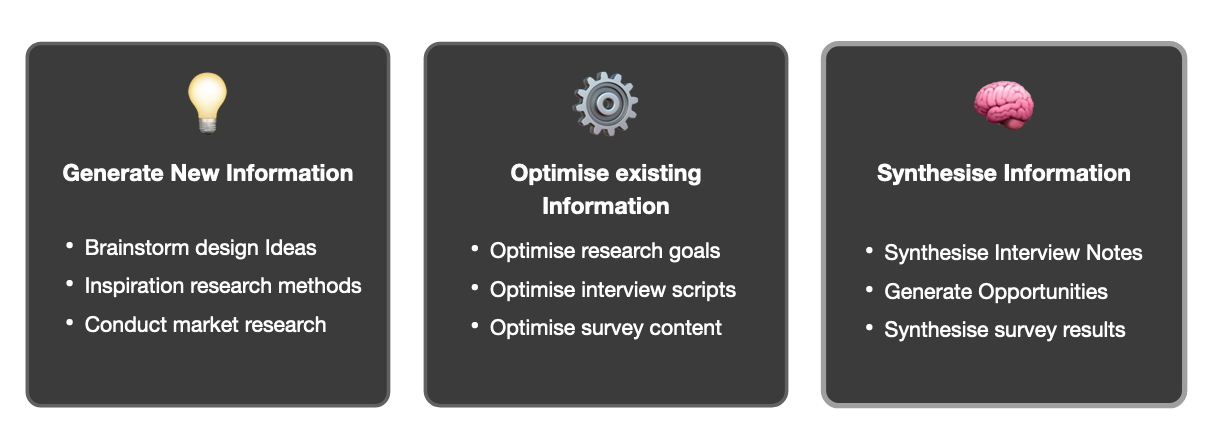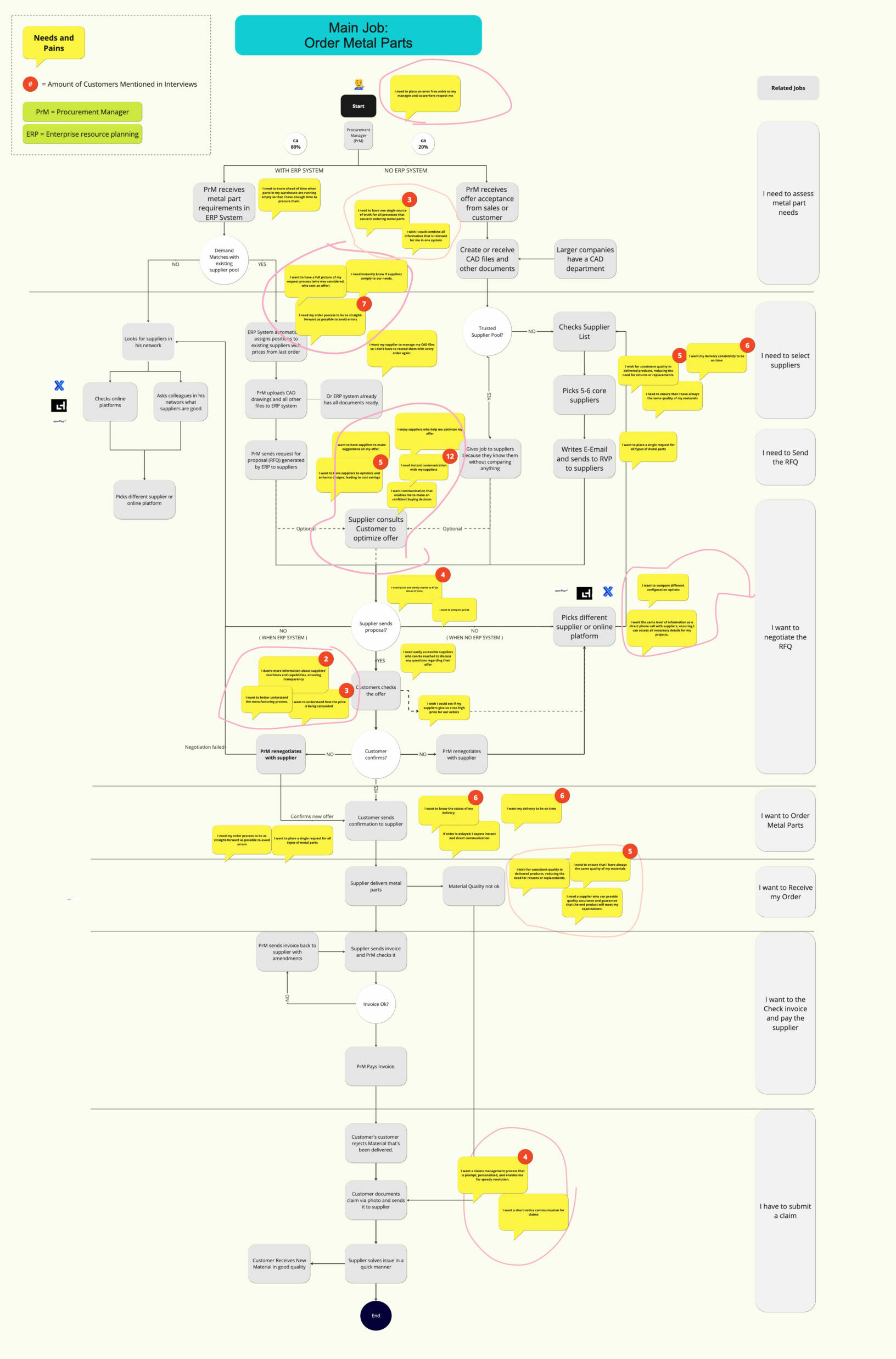End-to-End Product Discovery: From Defining Goals to Validating Insights for Product Growth
PRODUCT DISCOVERY CASE STUDY
INTRODUCTION
Laserhub, an online metal procurement platform, streamlines the process of ordering metal parts. But what about the bigger picture? This case study explores how a continuous Discovery Process revealed the hidden customer journey and its impact on Laserhub’s role within the metal procurement ecosystem.

The final product discovery documented in Dovetail
MY ROLE
As the Team Lead Product Designer, I spearheaded the Product Discovery process at Laserhub. I created a business centered research stratetgy, conducted user interviews, created followup surveys, and build the customer journey map, which uncovered the hidden customer journey and critical pain points in the metal procurement process.
Through close collaboration with stakeholders (Sales, Operations, Marketing) and the design team, the user research findings were translated into actionable insights and processes.
MY WORK
- User Research & Journey Mapping: Conducted user interviews, surveyes and mapped the customer journey to uncover hidden needs and Laserhub’s role within the metal procurement ecosystem.
- Strategic Problem-Solving: Identified the gap between Laserhub’s platform focus and the broader customer journey, leading to strategies for optimizing impact.
- Data Analysis & Insights: Analyzed user research data to extract key insights that informed product strategy and development.
UNDERSTANDTING THE PROBLEM
“Forget Laserhub” – Understand the customer from the inside-out.
“Sometimes I wish I had a neuralizer, like they have in Men in Black, to make us forget everything we know about our platform before we start with our Research”
– My Manager
Most of the existing User Research at Laserhub was focussed on the product and its usability. However, crucial customer insights were missing – how Laserhub integrates into the broader metal procurement process for its customers.
That’s why we wanted to start from a clean slate and “forget Laserhub” when talking to our customers. Our goals was to understand the customer in their ecosystem, that maybe has nothing to do with Laserhub.
This case study dives into uncovering the hidden customer journey and how user research informed strategies to optimize Laserhub’s impact within that ecosystem.
Target User
We wanted to learn more about our customers where we knew we were already solving a problem. That’s why we focussed our research on existing customers already invested in Laserhub, not on churned customers.
We interviewed personas responsible for the entire procurement process in their business:
👨🏻💼
Michael Manager
Michael is a proud owner of a machine building family business with 70 employees. He delegates the procurement process but he is the main decision maker. Any changes in the procurement process run over his table.
👨🏻🔧
Eddy Engineering
Eddy is 40 years old and studied mechanical engineering. He is an optimizer by heart and finds joy in reviewing existing machines and processes. He is responsible for the procurement process usually in smaller metal shops.
DISCOVERY PROCESS
RESEARCH METHODS
- 15 Semi-Structured Customer Interviews. The interviews were based on the Jobs-to-Be-Done Framework. It uncovered the customer’s “tasks” along the decision-making process of understanding the entire journey from first thought via passive looking to active looking and purchasing.
- 3 Follow-Up Surveys to further validate insights discovered during the interviews.
TOOLS
- ChatGPT 4.0 for interview syntethis and pain point definition.
- Dovetail for interview recording and documentation.
- Miro for customer journey and opportunity mapping.
- Survicate for follow-up surveys.
HOW CHAT GPT 4.0 SHAPED MY DISCOVERY PROCESS

FINDINGS AND OPPORTUNITIES
12 out of 15 interviewed customers have an ERP system. We cannot see any connection between company size and ERP system use.
Once a supplier has been assigned to an order position in an ERP system, it will automatically reassign the same position to the same supplier when the customer has to reorder that part. There are very specialized ERP systems, but the basic procurement process among ERP systems is similar
13 out of 15 customers stated they already have a preset of 5-6 preferred suppliers and will always give the jobs to them, if they can.
Long-term relationships are being nurtured and preferred over short-term business transactions. Some customer don’t even want to compare prices and offers – they just give the job instantly to one of their core suppliers.
10 out of 15 customers Customers prefer local, long-term relationships where consistency in quality, reliability, and price is key.
Laserhub is not considered by any of our interviewed customers as a core supplier.
9 out of 15 Customers see online procurement paltforms like Laserhub or Spanflug as a contingency plan if their “old” process is not working.
REVISED Assumtions after Interviews
- Laserhub always thought its customers were at a low level of digital transformation. The opposite is true: Most of Laserhub’s customers have a deeply embedded procurement process in an ERP system.
- Laserhub needs to find a way to integrate into the customer’s existing ERP-based procurement process.
- Laserhub learned that the relationship factor in the traditional B2B economy comes before innovative technologies. With increased spending, customers expect personal consultation beyond the platform interface.
- Laserhub is not a core supplier. Metal Procurement platforms are seen as a contingency plan if the old process is not working.
🕵️ This is where we had no visibility – The Customer Journey Map of Ordering Metal Parts with NEEDS and PAINS as CONTEXT

🎯 Prioritizing the opportunity space

FINAL OUTCOME
This user research project empowered Laserhub to shift its focus beyond the platform by uncovering the hidden customer journey and reliance on existing ERP systems. This newfound understanding of the broader metal procurement ecosystem opened doors for strategic product initiatives like an email-based ordering process integrated into customers’ ERP systems.

